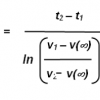You made a couple of claims and completely ignored them when I asked for a source. Then you brought up more unrelated examples that do not make the case for the exclusion of ID from science. 
Are you not capable of looking back through the thread? These are not unrelated example. Do you even know what unrelated means?
They make the case that you don't need ID for life to spontaneously emerge.
http://en.wikipedia....ary_computation
http://evolution.ber...dyorigins.shtml
not only that but a simple google search would reveal the evidence.
"By studying the basic biochemistry shared by many organisms, we can begin to piece together how biochemical systems evolved near the root of the tree of life. However, up until the early 1980s, biologists were stumped by a "chicken and egg" problem: in all modern organisms, nucleic acids (DNA and RNA) are necessary to build proteins, and proteins are necessary to build nucleic acids - so which came first, the nucleic acid or the protein? This problem was solved when a new property of RNA was discovered: some kinds of RNA can catalyze chemical reactions — and that means that RNA can both store genetic information and cause the chemical reactions necessary to copy itself. This breakthrough tentatively solved the chicken and egg problem: nucleic acids (and specifically, RNA) came first — and later on, life switched to DNA-based inheritance.
Another important line of biochemical evidence comes in the form of surprisingly common molecules. As you might expect, many of the chemical reactions occurring in your own cells, in the cells of a fungus, and in a bacterial cell are quite different from one another; however, many of them (such as those that release energy to power cellular work) are exactly the same and rely on the exact same molecules. Because these molecules are widespread and are critically important to all life, they are thought to have arisen very early in the history of life and have been nicknamed "molecular fossils." ATP, adenosine triphosphate (shown below), is one such molecule; it is essential for powering cellular processes and is used by all modern life. Studying ATP and other molecular fossils, has revealed a surprising commonality: many molecular fossils are closely related to nucleic acids, as shown below."
Read more on the berkely website, it's fascinating evidence.
Edited by serp777, 22 November 2014 - 09:57 PM.
What about the multiverse?


















































